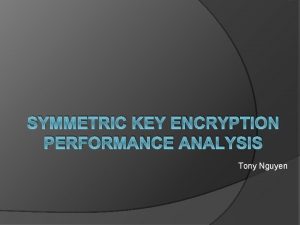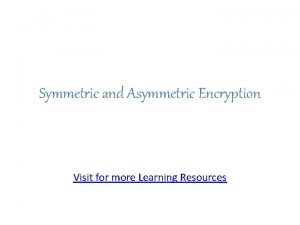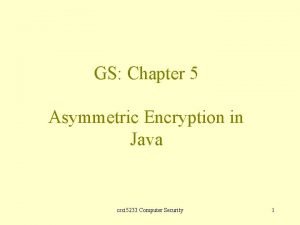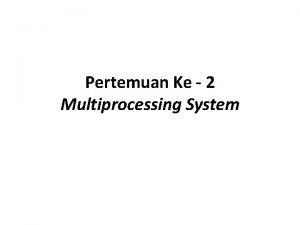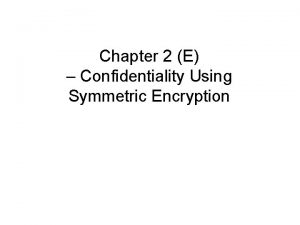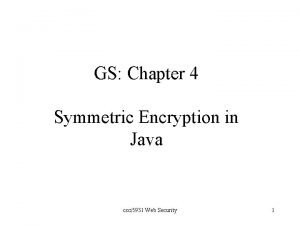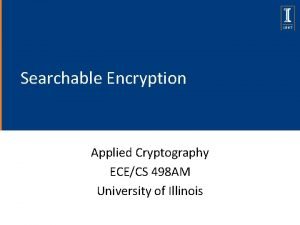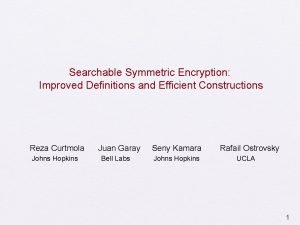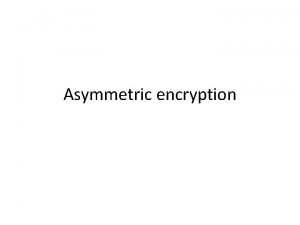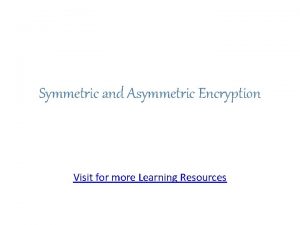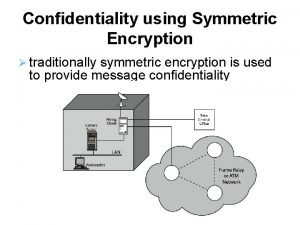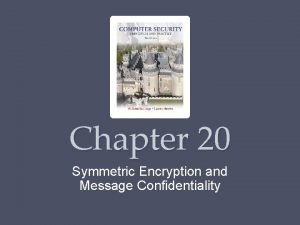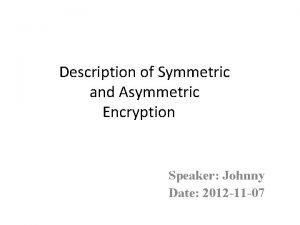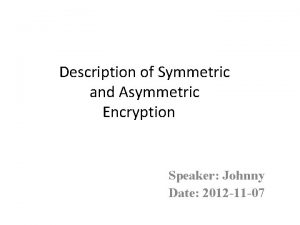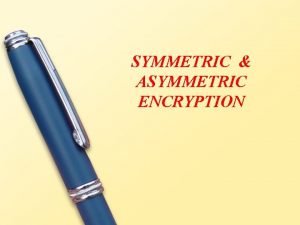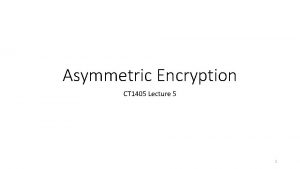Symmetric and Asymmetric Encryption Visit for more Learning














- Slides: 14

Symmetric and Asymmetric Encryption Visit for more Learning Resources

Symmetric-key cryptography 30. 2

Note In symmetric-key cryptography, the same key is used by the sender(for encryption) and the receiver (for decryption). The key is shared. Algorithm: DES, 3 DES 30. 3

Symmetric-key cryptography • Advantages: – Simple – Faster • Disadvantages: – Key must exchanges in secure way – Easy for hacker to get a key as it is passed in unsecure way.

Figure 30. 4 Asymmetric-key cryptography 30. 5

Note An asymmetric-key (or public-key) cipher uses two keys: one private (To encrypt data) and one public(To decrypt data). 30. 6

• Asymmetric Key Cryptography (Public Key Cryptography) – 2 different keys are used – Users get the Key from an Certificate Authority Advantages 1. More Secured 2. Authentication Disadvantages 1. Relatively Complex

Figure 30. 6 Comparison between two categories of cryptography 30. 8

• Asymmetric encryption use two keys, one to encrypt the data, and another key to decrypt the data. • These keys are generated together • . One is named as Public key and is distributed freely. The other is named as Private Key and it is kept hidden. • Both Sender & Recipient has to share their Public Keys for Encryption and has to use their Private Keys for Decryption.

How it WORKS……. ?

Key Points in Asymmetric Encryption v Asymmetric encryption use two keys: Public Key - to encrypt the data Private Key - to decrypt the data v These keys are generated together. v The Public key(s) is distributed freely between the sender and receiver. v The other is named as Private Key and it is kept hidden. v The Private Key is only used for Decryption and will not be shared between the sender and receiver.

Asymmetric Encryption Algorithms v. RSA: v. Digital Signature Algorithm: v. Diffie-Helman: . © 2013, Triad Square Info. Sec Pvt. Ltd

MERITS & DE-MERITS Merits: v Two parties don't need to have their private keys already shared in order to communicate using encryption. v Authentication and Non-Repudiation are possible. (Authentication means that you can encrypt the message with my public key and only I can decrypt it with my private key. Non-repudiation means that you can "sign" the message with your private key and I can verify that it came from you with your public key. ) De-Merits: v. Asymmetric Encryption algorithms are comparatively complex. v. Time consuming process for Encryption and Decryption. © 2013, Triad Square Info. Sec Pvt. Ltd

For more detail contact us
 Lirik lagu more more more we praise you
Lirik lagu more more more we praise you More more more i want more more more more we praise you
More more more i want more more more more we praise you Key distribution center
Key distribution center Rsa vs aes performance
Rsa vs aes performance Symmetric and asymmetric matrix
Symmetric and asymmetric matrix Disadvantages of asymmetric encryption
Disadvantages of asymmetric encryption Des aes
Des aes Asymmetric encryption java
Asymmetric encryption java Symmetric multiprocessing adalah
Symmetric multiprocessing adalah Example of skew symmetric matrix
Example of skew symmetric matrix Confidentiality using symmetric encryption
Confidentiality using symmetric encryption Symmetric encryption java
Symmetric encryption java Searchable symmetric encryption
Searchable symmetric encryption Searchable symmetric encryption
Searchable symmetric encryption Cuadro comparativo e-learning m-learning b-learning
Cuadro comparativo e-learning m-learning b-learning



